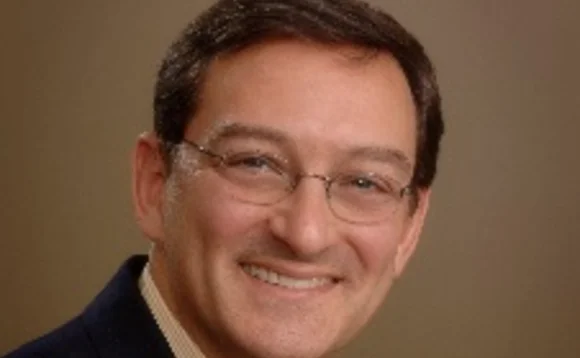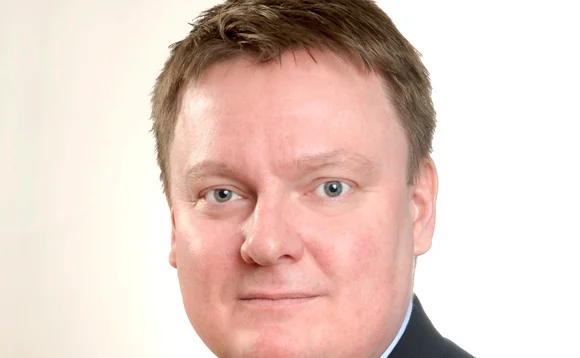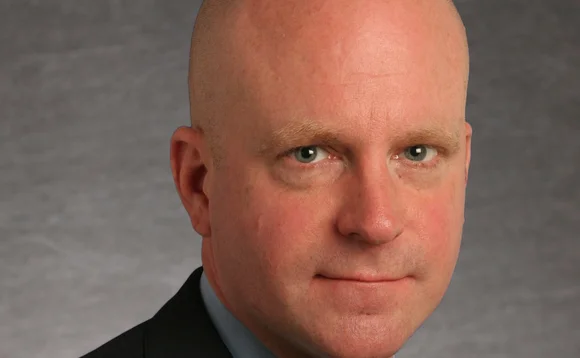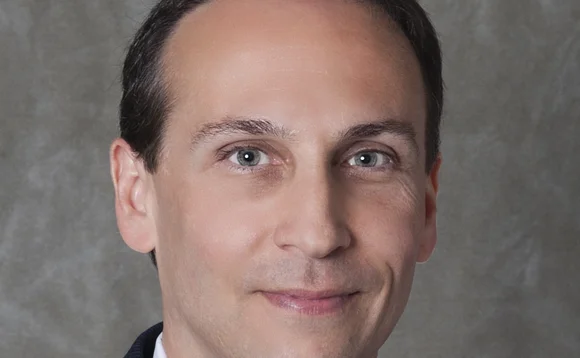CAT Conundrum: SROs, Vendors Vie to Build Consolidated Audit Trail





In 2012, the US Securities and Exchange Commission passed Rule 613, requesting the industry to develop a plan to build and run a platform capable of tracking and storing information on every order, cancellation, modification and trade execution for exchange-listed equities and options in the US markets. Two years later, the consolidated audit trail, or CAT, is finally coming into focus. By Dan DeFrancesco
It took two years, two delays, 36 meetings with industry members, and countless amounts of criticism, but the consolidated audit trail (CAT), a processor that will collect and store data on all activity in the National Market System (NMS) securities market, is finally on track to be built.
It’s been a rocky road, to say the least, since the Securities and Exchange Commission (SEC) first approved the concept of the CAT with Rule 613 in July of 2012. The rule required a group of self-regulatory organizations (SROs)—known as the CAT Consortium, made up of 17 national exchanges as well as the Financial Industry Regulatory Authority (Finra)—to submit the NMS Plan detailing how to create, implement and maintain the CAT.
Twice the group received an extension, and, for a brief period, requested a third delay, but on September 30, the NMS Plan was submitted for public comment and SEC approval.
Once approved, the CAT Consortium will have two months to select one of the six finalists left from the original 31 bidders to build the massive audit trail.
“The raw data shouldn’t flow directly into an arm of the regulator; rather, it should flow into an entity that owes its sole duty to the SROs. In other words, you don’t want your regulator writing you a speeding ticket for a spacing error.” Tom Sporkin, BuckleySandler
Waters spoke with the remaining bidders to get their take on what the biggest technological challenges are around building the CAT, the effect it will have on the market, and what sets them apart from the other finalists.
“This will facilitate more comprehensive monitoring of the financial markets and allow the SEC to carry out market reconstruction as necessary and ad hoc market analysis,” says a spokesperson for the CAT Consortium. “The biggest challenge is getting a sophisticated and complex data system of this size up and running, with multiple users and contributors, in a very short time frame.”
Size Matters
While size is often the first thing brought up when discussing the CAT—and rightfully so, as it will require the ability to store approximately four petabytes of data a year and process 58 billion records a day—Computer Sciences Corporation (CSC) isn’t particularly worried about that aspect of the challenge.
CSC, which is partnering with AxiomSL, Oracle, EMC² and MIAX Technologies on its proposal, cut its teeth building massive databases for the government.
“We’ve done larger database projects for other government agencies, so while it’s big, it’s not scary in any way,” says Mike Steinharter, vice president and general manager of banking and capital markets industry for CSC. “Technically, it just requires a good understanding of the systems, the requirements, and what the regulators are looking for and so on, to enhance and improve what we already have in our audited government business.”
Steinharter declines to go into specifics about solutions CSC has worked on for the government, which makes up between 30 and 40 percent of its business, but says they have more than enough experience to build what is expected to be the largest database in the financial services industry.
“It’s big scale, but it’s not bigger than what we’ve built,” Steinharter says.
Reporting for Duty
It might be tough to get past the magnitude of the CAT’s central repository, but before you can store data you must first receive it. The reporting aspect is not something to be overlooked, as at least some reengineering will be required on the reporters’ end. Moderately sized broker-dealers will likely have the toughest time adapting, which is one of the reasons they were given the most time to prepare for reporting to the CAT in the proposed timeline by the SEC.
Enter SunGard, which claims its deep experience in reporting makes it the right fit for the job, along with its partner, Google.
“We’ve got deep, deep domain expertise in what it takes to do this type of reporting. We’re not just a pure software organization—we’re a reporter,” says Neil Palmer, a partner at SunGard. “We’re not just a pure, sort of regulatory body. We’re really coming at it from the same side as the broker-dealer, because it impacts us just as much as it impacts them. So we think that’s a bit of a differentiator.”
SunGard already has plans for what is possible with the data once it is submitted, something fellow bidders Epam/Broadridge and Thesys also brought up. The idea is to allow brokers to benefit from their submitted data.
Whether that will be allowed is still up in the air, as currently the SEC states that data collected by the CAT will only be made available to SROs’ regulatory staff and the SEC.
“We think there is potential for the reporters to do all sorts of analytics on this data for themselves,” Palmer says. “It’s about being able to allow them to use the existing tooling they have and plug it into this system so they can monitor their own reports and risk calculations, cost of acquisitions, portfolio complexity, and so on. It’s more than just forcing them to send over this information, drop it in a black box, and that’s the last they see of it. We want them to get value out of it.”
Keeping Up with the Times
One of the major goals of the CAT is to shine a brighter light on certain algorithmic trading practices, specifically high-frequency trading (HFT). The May 2010 Flash Crash was arguably the tipping point for then-SEC chair Mary Schapiro to approve the concept of the CAT in 2012. So who better to handle the reporting of algorithmic trading than a firm that does it every day?
That’s the theory behind Thesys Technologies’ proposal, the vendor arm of HFT shop Tradeworx. Manoj Narang, CEO of Tradeworx, says the linkage of these complicated trades, something vitally important to the CAT’s intent of being able to reconstruct the market, is difficult for firms without the specific expertise.
“Really, there are very, very few bidders that have that kind of expertise because we live in a complicated regime of market structure with boundless fragmentation,” Narang says. “Orders can get split into discretionary execution, into algorithmic execution and those algorithmic executions that go from blocks to get split up into child orders, each of which get routed in different ways. Some of them go to lit venues, some of them go to dark venues. To be able to tie all those things together, you have to have a pretty good background in algorithmic trading.”
It took several months for regulators to piece together what led to the Flash Crash, a process they are hoping to expedite with the CAT. That will require a bidder with specific domain experience, which is something many of the proposals lack, according to Narang.
“They may be financial technology firms, but they’re kind of old-guard financial technology firms that really have no specialization in these kind of newer technologies and new methods,” Narang says. “That really gets to the heart of why the Order Audit Trail System (OATS) needs to be revamped and overhauled—because it’s insufficient to account for all of the kinds of trading that happens nowadays. So the gaps between OATS and the CAT really are heavily about algorithmic trading, and we think our background as an algorithmic trading firm is something that bears directly on those deficiencies.”
Cost of Doing Business
With a system of this size, cost has been another big concern. It’s no secret that the amount of money spent on remaining compliant has put significant strain on most firms’ technology budgets. The average estimate of the cost of building the CAT is $53 million, with an average estimate of $255.6 million for the cost of operation and maintenance over five years. The estimated cost reporters will face in setting up their systems to report to the CAT varies greatly.
Mark Bisker, Epam Systems’ head of capital markets competency center, which is partnering with Broadridge in its bid, sees the entire project in a different light. Instead of looking at the reporting requirements of the CAT as yet another regulation, Bisker views it as an opportunity to eventually cut firms’ compliance costs.
“We believe that with the implementation of the system, compliance and regulators will be able to investigate certain cases on their own without years of phone calls or sending email requests to brokers,” Bisker says. “The majority of the requests, at least the way they envisioned this and designed it, will be empowered to do big-scale research similar to whatever happened with the Flash Crash in substantially less than half-a-year’s time.”
The key for this to be possible, though, will be the CAT servicing data without constantly engaging the submitters, according to Bisker. Firms that report to the CAT should be able to submit their data and forget about it.
“Otherwise, if it’s yet another OATS, if it is the same, or of a similar philosophy, but where the transfer of the weight is put on the brokers, that will defeat the purpose,” Bisker says. “It shouldn’t even be a method of, in our view, a Finra. Finra, or whoever regulates, should make sure that the data submitted is fine. That’s it. After that, this CAT platform should take care of the servicing data and any operations of the data by itself.”
Status Quo
Building “yet another OATS” isn’t what the SEC wants, but reengineering the equities market’s current audit system isn’t out of the question, either. That’s the basis of Finra’s proposal. The regulatory body, which currently operates OATS, says it has begun working on upgrades to the system based on feedback from firms over the past 16 years and the guidelines in the CAT Consortium’s request for proposals.
“We are rewriting OATS from the ground up so that it is fully leveraging modern technology, and, in effect, addressing the issues that we have received from the broker-dealer community,” says Steve Randich, Finra’s CIO.
Finra is partnering with the DTCC and Amazon on its proposal. Randich says its experience running the market’s current audit system—and the fact it will use open-source technology, which Finra believes will be cheaper and more flexible for firms—makes it the best choice.
“We’ve been running the only industry audit trail for the last 16 years,” says Randich when asked what sets Finra apart from the other five finalists. “We think, at the end of the day, we’re going to have the most economically competitive bid and the least risky in terms of schedule and operator or vendor risk because we’re doing it today.”
Finra is also involved in the selection process, causing many to wonder whether their involvement is a conflict of interest. (Click here for more info.)
“It’s almost like it’s two different companies; there is a complete information barrier,” Randich says. “It’s a concern—just because it’s a natural concern—but we’ve put the utmost precautions in place to ensure that there is no influence.”
Taking On the Incumbent
Finra has managed to influence at least one party involved in the CAT. Fellow bidder Catpro Consortium, comprised of J. Streicher Analytics, BuckleySandler, Booz Allen, and Hewlett-Packard (HP), has heavily based its proposal on the regulatory body’s current setup, according to BuckleySandler partner Tom Sporkin. Finra, according to Sporkin, is the only other bidder that has a full end-to-end solution.
Sporkin says Catpro is looking to provide everything Finra already does, which includes an entity (Booz Allen), legal compliance (BuckleySandler) and both big data (HP) and trade-capture (J. Streicher Analytics) technologies.
“If you want to take on the incumbent and provide a compelling reason to switch, you’ve got to at least be able to provide what the incumbent provides and then some,” Sporkin says.
But if the Catpro is looking to do exactly what Finra already does, why bother switching? What sets the Catpro apart from Finra, according to Sporkin, is that it’s not a regulatory body. Sporkin says there should be a buffer between the raw data and the regulators.
“I’m not saying that Finra and the SEC shouldn’t have full access to 100 percent of everything in the central repository; they absolutely need to,” says Sporkin, who helped develop the idea for the CAT while working with the SEC before heading to BuckleySandler. “But it shouldn’t be in the first instance. The raw data shouldn’t flow directly into an arm of the regulator; rather, it should flow into an entity that owes its sole duty to the SROs. In other words, you don’t want your regulator writing you a speeding ticket for a spacing error.”
This concept backs the thinking from J. Streicher Analytics CEO Tom Brown that the CAT is a chance to shift the power.
“His philosophy is that this is the industry’s opportunity to take back from the regulator the management of its own data,” Sporkin says. “That is where this data rightfully belongs.”
Still Not Enough
And while the CAT might seem like a tremendous project at times, for some it’s not going far enough. The disappointment in Joe Saluzzi’s voice is evident throughout a conversation about the CAT. The co-founder of the brokerage Themis Trading has several issues with the audit trial, including it not identifying beyond the broker level or tracking the futures market. The fact the project has taken so long to develop and is still, in Saluzzi’s eyes, far from being implemented hasn’t helped matters.
“Two years after the proposal, we’re still nowhere,” Saluzzi says. “It took two years to get the proposal. Two years after that we’re still nowhere near even getting somebody out here. It’s frustrating. Let’s get this thing moving already.”
While Saluzzi says he is thrilled the SEC is making an effort to try and make the markets more transparent and increase investors’ confidence, he feels it’s a half-measure that the regulators are ill-equipped to make. Specifically, Saluzzi says the CAT won’t be able to shine a bright enough light on HFT.
“When you’re in an electronic world, everyone is dealing in microseconds and looking to take advantage of somebody else,” Saluzzi says. “We’ve said this before: They’re going to a gun fight with a knife. They need to come out with the proper technology on the other side.”
___________________________________________________________________
What Is the Consolidated Audit Trail?
The consolidated audit trail (CAT) will track orders, executions and quote lifecycles for all equities and options on a daily basis and store the data in a central repository, likely to be the largest in the industry. The goal is to produce an audit trail that will allow the Securities and Exchange Commission (SEC) to perform comprehensive market reconstruction. The concept was originally developed by the SEC in 2012, during which the Commission asked a group of self-regulatory organizations (SROs) to put together a plan to build the CAT and select a bidder. At the end of September of this year, the plan was submitted for public comment and SEC approval, following which the group will have two months to select one of the six remaining bidders to design and build the CAT. SROs are required to start reporting their trade data to the repository one year after the plan has been approved by the SEC. Large broker-dealers will have two years to follow suit, while small broker-dealers will have three.
Salient Points
- The Consolidated Audit Trail seems to finally be on track to being built. A plan for building the audit trail was submitted by a group of SROs. Following approval by the SEC, the SROs will have two months to select one of six remaining bidders to build it.
- One of the biggest hurdles of the CAT will be its size. The database will be the largest in the history of the financial services industry.
- According to the CAT NMS Plan, the average of the six bidders’ estimates for the initial cost of building the CAT is $53 million. The average estimate among the bidders for operation and maintenance was $255.6 million over five years, or an annual average of $51.1 million.
Only users who have a paid subscription or are part of a corporate subscription are able to print or copy content.
To access these options, along with all other subscription benefits, please contact info@waterstechnology.com or view our subscription options here: http://subscriptions.waterstechnology.com/subscribe
You are currently unable to print this content. Please contact info@waterstechnology.com to find out more.
You are currently unable to copy this content. Please contact info@waterstechnology.com to find out more.
Copyright Infopro Digital Limited. All rights reserved.
As outlined in our terms and conditions, https://www.infopro-digital.com/terms-and-conditions/subscriptions/ (point 2.4), printing is limited to a single copy.
If you would like to purchase additional rights please email info@waterstechnology.com
Copyright Infopro Digital Limited. All rights reserved.
You may share this content using our article tools. As outlined in our terms and conditions, https://www.infopro-digital.com/terms-and-conditions/subscriptions/ (clause 2.4), an Authorised User may only make one copy of the materials for their own personal use. You must also comply with the restrictions in clause 2.5.
If you would like to purchase additional rights please email info@waterstechnology.com
More on Regulation
Waters Wavelength Ep. 312: Jibber-jabber
Tony, Reb, and Nyela talk about tariffs (not really), journalism (sorta), and pop culture (mostly).
Experts say HKEX’s plan for T+1 in 2025 is ‘sensible’
The exchange will continue providing core post-trade processing through CCASS but will engage with market participants on the service’s future as HKEX rolls out new OCP features.
No, no, no, and no: Overnight trading fails in SIP votes
The CTA and UTP operating committees voted yesterday on proposals from US exchanges to expand their trading hours and could not reach unanimous consensus.
Big xyt exploring bid to provide EU equities CT
So far, only one group, a consortium of the major European exchanges, has formally kept its hat in the ring to provide Europe’s consolidated tape for equities.
Jump Trading CIO: 24/7 trading ‘inevitable’
Execs from Jump, JP Morgan, Goldman Sachs, and the DTCC say round-the-clock trading—whether five or seven days a week—is the future, but tech and data hurdles still exist.
Pisces season: Platform providers feed UK plan for private stock market
Several companies in the US and the UK are considering participating in a UK program to build a private stock market composed of separate trading platforms.
How to navigate regional nuances that complicate T+1 in Europe
European and UK firms face unique challenges in moving to T+1 settlement, writes Broadridge’s Carl Bennett, and they will need to follow a series of steps to ensure successful adoption by 2027.
Nasdaq leads push to reform options regulatory fee
A proposed rule change would pare costs for traders, raise them for banks, and defund smaller venues.








